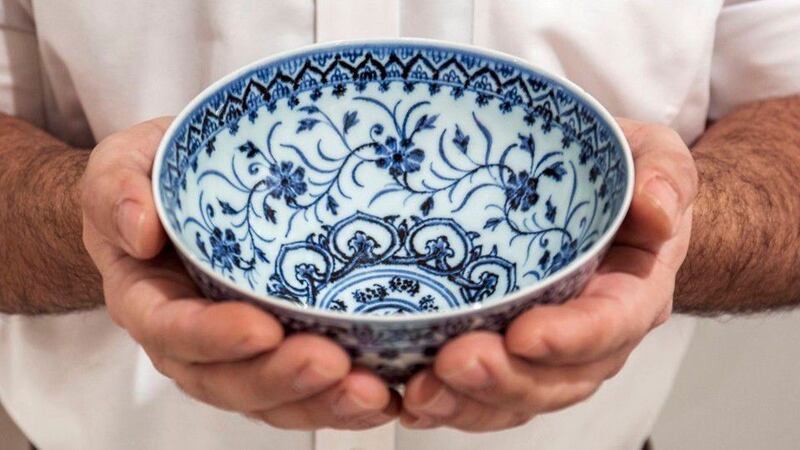HARTFORD, Conn. — Shoppers can find treasures at yard sales, but a 15th-century Chinese porcelain bowl discovered at a Connecticut sale last year may be the ultimate prize.
The small white bowl, adorned with cobalt blue paintings of flowers and other designs, fetched nearly $722,000 at a Sotheby’s auction on Wednesday, The Associated Press reported.
Not bad for a $35 investment.
The bowl, which measures 6 1/4 inches in diameter, was part of Sotheby’s Asia Week events. The names of the buyer and seller were not revealed, according to the auction house.
#AuctionUpdate: The discovery of a lifetime: moments ago in our NY salesroom, a Ming dynasty, Yongle period exceptional & rare blue and white 'floral' bowl, originally purchased for $35 at a Connecticut yard sale last year, reached $721,800 - surpassing its $500,000 high estimate pic.twitter.com/nxBl2VLYQU
— Sotheby's (@Sothebys) March 17, 2021
The bowl is “delicately potted in the shape of a lotus bud (lianzi) or chicken heart (jixin), with deep rounded sides and a pointed base resting on a short, narrow foot,” according to Sotheby’s lot description. The bowl dates to the Yongle period of the Ming dynasty, according to Sotheby’s.
It was one of only seven bowls known to exist.
>> Yard sale find: Bowl turns out to be 15th-century artifact worth $300,000
Sotheby’s had estimated the artifact’s value at between $300,000 to $500,000, and bidding began at $200,000.
After 15 bids, the winning bid of $580,000 was submitted by telephone, the AP reported. After factoring in the buyer’s premium and other fees, the final price was $721,800, according to Sotheby’s.
That is a return of investment of more than 21,000 times what the yard sale patron bought the bowl, which dates to the 1400s.
“Today’s result for this exceptionally rare floral bowl, dating to the 15th century, epitomizes the incredible, once in a lifetime discovery stories that we dream about as specialists in the Chinese Art field,” Angela McAteer, head of Sotheby’s Chinese Works of Art Department, said in a statement.
The Yongle emperor was the third ruler of the Ming Dynasty, and the bowl was made for the monarch’s court, the AP reported.
According to Sotheby’s, the other six similar bowls are not in the United States. Two are at museums in London, two are at the National Palace Museum in Taipei, Taiwan, and one in housed in the National Museum of Iran in Tehran.
It remains a mystery how the bowl wound up in Connecticut. But what a find!
Cox Media Group








